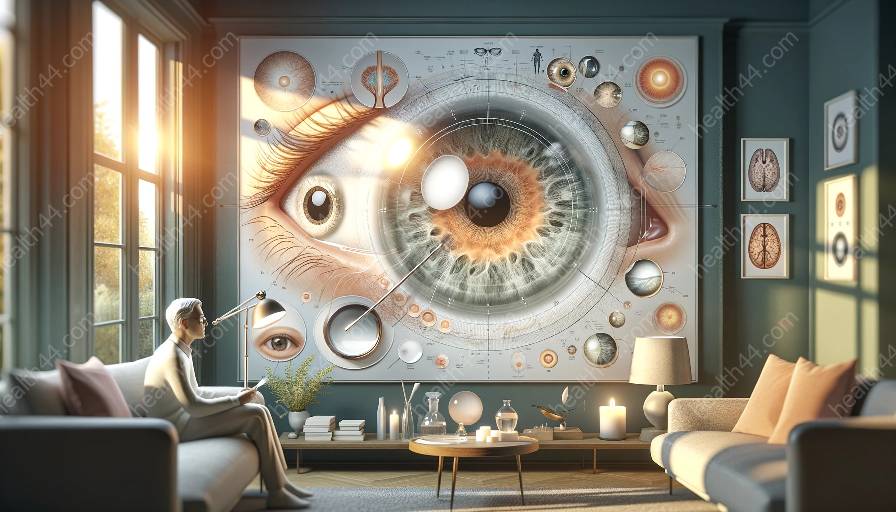The eye is a complex organ that can undergo various changes with age, impacting the selection of appropriate lenses for vision correction. Understanding the compatibility between lenses and the anatomy of the eye is essential in ensuring optimal vision care throughout different stages of life.
Anatomy of the Eye
The anatomy of the eye is comprised of several crucial components that work together to enable vision. These components include the cornea, lens, retina, and optic nerve. The cornea is the transparent outer layer that helps to focus light, while the lens, located behind the iris, adjusts its shape to focus on objects at varying distances. The retina, located at the back of the eye, receives and processes the light, sending signals through the optic nerve to the brain for visual interpretation.
Changes with Age
As individuals age, the anatomy of the eye undergoes several notable changes. One significant change is related to the lens of the eye, which gradually loses its flexibility. This condition, known as presbyopia, affects the eye's ability to focus on close objects, leading to difficulties with reading and other close-up tasks. In addition, the lens may become less transparent, resulting in the formation of cataracts, which can significantly impact vision clarity. Furthermore, the muscles that control the shape of the lens may also weaken, making it harder for the eye to focus effectively on near and distant objects.
Impact on Lens Selection
Understanding the age-related changes in the anatomy of the eye is crucial when selecting appropriate lenses for vision correction. In the case of presbyopia and decreased lens flexibility, multifocal lenses are often recommended to address both near and distance vision. These lenses offer different prescriptions in different areas of the lens, allowing wearers to see clearly at various distances without constantly switching between multiple pairs of glasses.
For individuals experiencing cataracts, the selection of appropriate lenses for vision correction may involve the consideration of intraocular lenses (IOLs) to replace the clouded natural lenses. These artificial lenses can restore clear vision by replacing the cloudy lens with a clear, artificial one. Additionally, advances in technology have led to the development of premium IOLs, such as toric and multifocal IOLs, which can also correct astigmatism and presbyopia, addressing multiple vision issues simultaneously.
Compatibility between Lenses and Eye Anatomy
When selecting lenses for vision correction, it is essential to consider the compatibility between the lenses and the anatomy of the eye to ensure optimal outcomes. The design and material of the lenses must align with the specific needs and characteristics of the eye to provide the best possible vision correction.
- Design: The design of lenses, such as multifocal and toric lenses, must be tailored to address the specific vision needs of individuals with age-related changes in their eyes. For example, multifocal lenses are designed with distinct zones for near, intermediate, and distance vision, catering to the varying needs of individuals with presbyopia.
- Material: The material of the lenses also plays a crucial role in compatibility with the aging eye. High-quality, advanced materials that provide clarity, durability, and comfort are essential for long-term vision correction, especially for individuals with age-related changes such as decreased lens flexibility and cataracts.
Overall, understanding the compatibility between lenses and the anatomy of the aging eye is fundamental in ensuring individuals receive the most suitable vision correction options to address their evolving visual needs.








